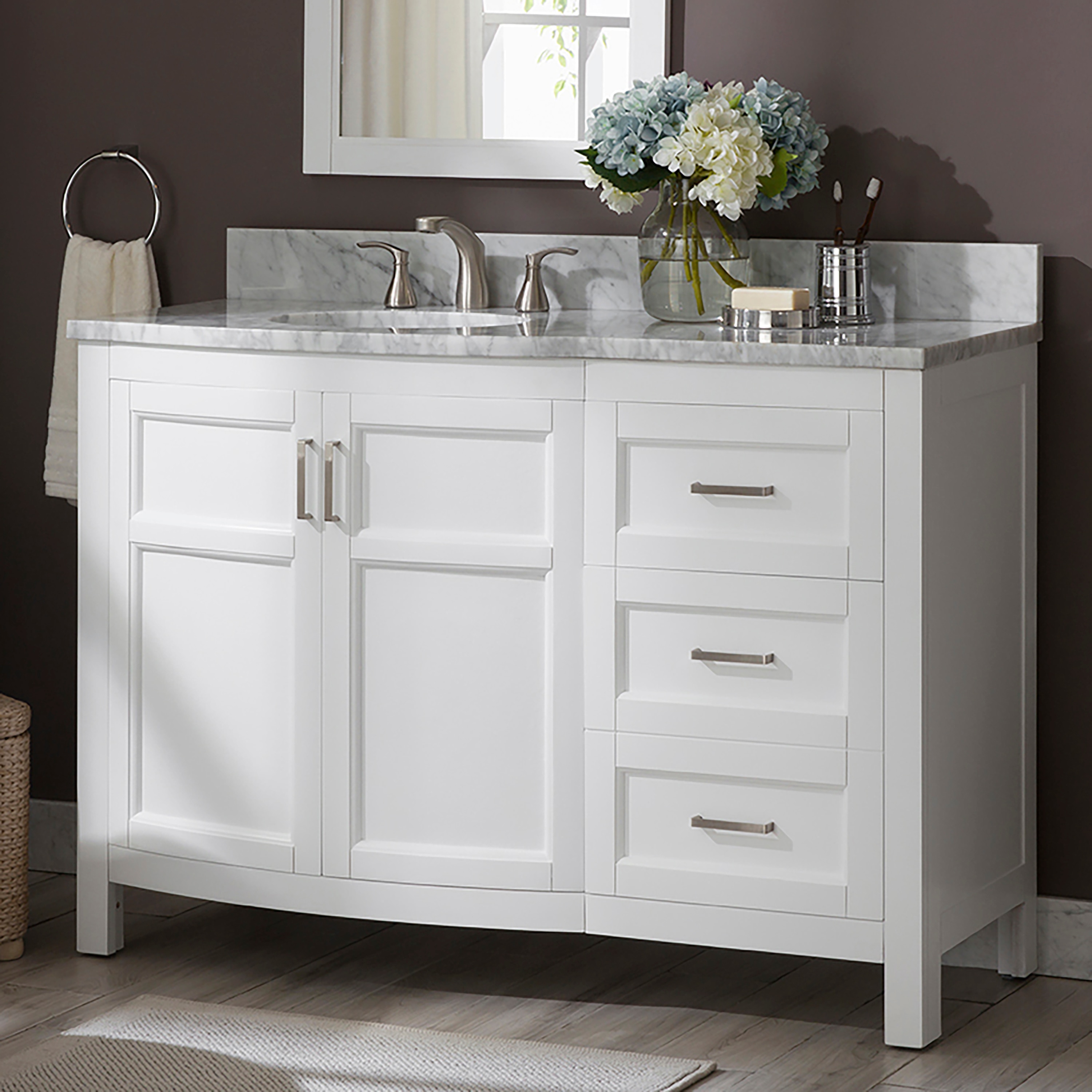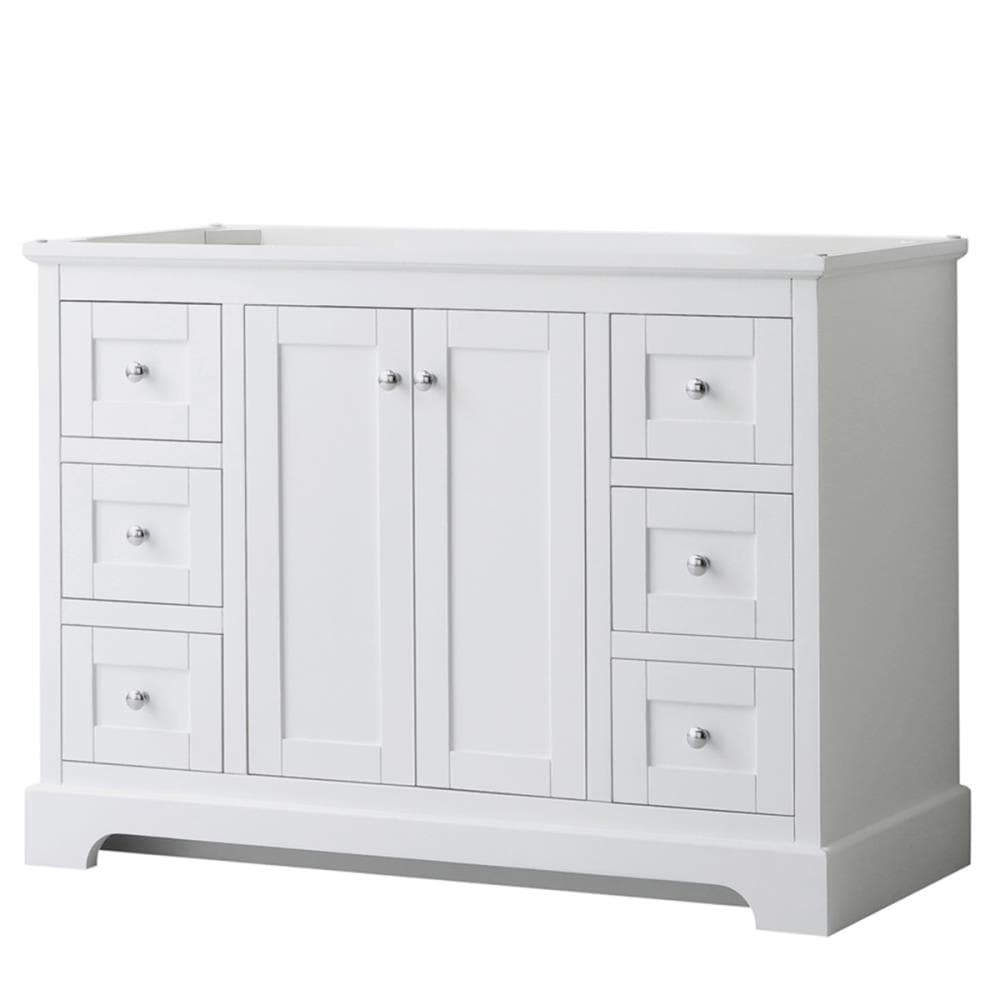Choosing the Right 47 Inch Vanity Cabinet

A 47-inch vanity cabinet is a popular choice for bathrooms of various sizes, offering ample storage space and a stylish look. Selecting the right vanity cabinet for your bathroom can be a daunting task, with numerous options available in terms of style, materials, and price. This guide will help you navigate through the choices and find the perfect vanity cabinet that meets your needs and preferences.
Types of Vanity Cabinets
The type of vanity cabinet you choose will depend on your bathroom size, style, and budget. Here is a table comparing different vanity cabinet types based on their features, materials, and price range:
| Type | Features | Materials | Price Range |
|—|—|—|—|
| Traditional | Classic design with intricate details, often featuring wood or painted finishes | Solid wood, veneer, MDF | $500 – $2,000+ |
| Contemporary | Clean lines, minimalist design, often featuring sleek finishes like metal or glass | MDF, laminate, acrylic | $400 – $1,500+ |
| Transitional | Blends traditional and contemporary elements, offering a balanced look | Solid wood, veneer, MDF, laminate | $600 – $2,000+ |
| Modern | Bold and innovative designs, often featuring unusual shapes and materials | Solid wood, metal, acrylic, glass | $800 – $3,000+ |
| Farmhouse | Rustic and charming design, often featuring distressed wood or metal accents | Solid wood, reclaimed wood, metal | $700 – $2,500+ |
Factors to Consider When Selecting a Vanity Cabinet
Several factors should be considered when selecting a 47-inch vanity cabinet for your bathroom:
– Bathroom Size: Measure your bathroom space carefully to ensure the vanity cabinet fits comfortably. Consider the available space for doors to open and for people to move around.
– Style: Choose a vanity cabinet that complements the overall style of your bathroom. For a traditional bathroom, a traditional vanity cabinet would be a good choice, while a contemporary bathroom might benefit from a contemporary vanity cabinet.
– Budget: Vanity cabinets come in a wide range of prices, so set a budget before you start shopping.
– Storage Needs: Consider your storage needs and choose a vanity cabinet with enough drawers, shelves, and cabinets to accommodate all your bathroom essentials.
– Sink and Countertop: The sink and countertop are integral parts of the vanity, so choose them carefully to ensure they complement the vanity cabinet and meet your needs.
Pros and Cons of Popular Vanity Cabinet Materials
Vanity cabinets are made from various materials, each with its own pros and cons:
– Solid Wood:
– Pros: Durable, elegant, timeless, can be refinished
– Cons: Expensive, susceptible to moisture damage, requires regular maintenance
– Veneer:
– Pros: Affordable, offers the look of solid wood, can be stained or painted
– Cons: Less durable than solid wood, susceptible to moisture damage
– MDF (Medium-Density Fiberboard):
– Pros: Affordable, durable, available in various finishes
– Cons: Not as water-resistant as solid wood, can be susceptible to scratches
– Laminate:
– Pros: Affordable, water-resistant, easy to clean
– Cons: Can look cheap, less durable than other materials, limited design options
Selecting the Right Sink and Countertop
The sink and countertop are crucial components of a 47-inch vanity cabinet. Here’s a guide to help you choose the right ones:
– Sink:
– Undermount Sinks: These sinks are installed beneath the countertop, creating a seamless look. They are more expensive but easier to clean.
– Top Mount Sinks: These sinks are placed on top of the countertop. They are more affordable and easier to install.
– Vessel Sinks: These sinks are placed on top of the countertop and have a bowl-like design. They are stylish and unique but can be more difficult to clean.
– Countertop:
– Granite: Durable, scratch-resistant, heat-resistant, comes in various colors and patterns.
– Quartz: Non-porous, stain-resistant, easy to clean, comes in a wide range of colors and patterns.
– Marble: Elegant, unique, comes in various colors and patterns, but can be porous and susceptible to stains.
– Laminate: Affordable, water-resistant, easy to clean, comes in a wide range of colors and patterns.
Installing a 47 Inch Vanity Cabinet

Installing a 47-inch vanity cabinet can be a rewarding DIY project, adding a touch of elegance and functionality to your bathroom. However, proper planning and execution are crucial to ensure a successful installation. This section will guide you through the process, providing tips and best practices to avoid common mistakes.
Preparing the Installation Area
Before starting the installation, it’s essential to prepare the area to ensure a smooth and accurate process. This involves clearing the space, removing any existing fixtures, and checking the wall for any obstacles.
- Clear the area around the intended installation location, removing any furniture, decor, or obstacles that may hinder your work.
- Remove the old vanity, if applicable, carefully disconnecting the plumbing and electrical connections. Remember to turn off the water supply to the bathroom before disconnecting the plumbing.
- Inspect the wall for any unevenness, bumps, or obstructions. If necessary, use patching compound or drywall to create a smooth and level surface for the vanity cabinet.
Installing the Vanity Cabinet
Once the installation area is ready, you can begin installing the vanity cabinet. This involves securing the cabinet to the wall and connecting the plumbing and electrical fixtures.
- Position the vanity cabinet in the desired location, ensuring it’s level and centered. Use shims to adjust the cabinet’s position if needed.
- Mark the wall for the mounting holes using a pencil.
- Drill pilot holes into the wall at the marked locations, ensuring they are deep enough to accommodate the mounting screws.
- Secure the vanity cabinet to the wall using the provided mounting screws. Make sure the screws are long enough to penetrate the wall studs for optimal support.
Connecting the Plumbing, 47 inch vanity cabinet
Plumbing connections are a crucial aspect of vanity installation. This involves connecting the water supply lines and the drain pipe.
- Connect the water supply lines to the vanity’s faucet using compression fittings. Ensure the connections are tight to prevent leaks.
- Connect the drain pipe to the vanity’s drain using a P-trap and a slip joint. Secure the connections with pipe thread sealant to prevent leaks.
- Test the plumbing connections for leaks by turning on the water supply and checking for any drips or leaks.
Connecting the Electrical
Electrical connections are equally important for a functional vanity. This involves connecting the electrical outlet to the vanity’s light fixture.
- Connect the electrical outlet to the vanity’s light fixture using wire connectors. Ensure the connections are secure and properly insulated.
- Turn on the power supply to the outlet and test the light fixture to ensure it’s working correctly.
Finishing Touches
After completing the installation, it’s essential to perform some finishing touches to ensure a professional look and functionality.
- Install the vanity’s hardware, such as knobs, pulls, and hinges.
- Clean the vanity cabinet thoroughly to remove any dust or debris accumulated during installation.
- Apply a sealant to the vanity’s countertop to protect it from water damage.
A 47 inch vanity cabinet is perfect for a smaller bathroom, giving you just enough space for your essentials. If you’re going for a more rustic look, you could totally rock some white washed wood cabinets – they’re super trendy right now.
A 47 inch vanity cabinet with white washed wood would totally make your bathroom look fresh and modern, you know?
Yo, a 47-inch vanity cabinet is pretty big, right? Like, it’s gonna take up a lot of space. But if you’re looking for something smaller, check out small wooden cabinets with drawers. They’re perfect for storing your makeup and stuff, and they come in all kinds of styles.
So, whether you’re going for a big vanity or a smaller cabinet, there’s something out there for you.
